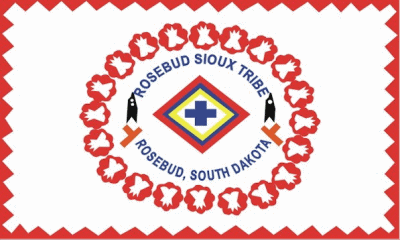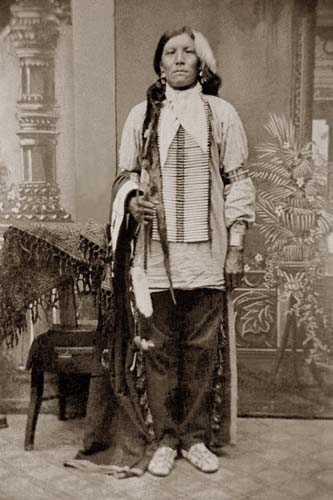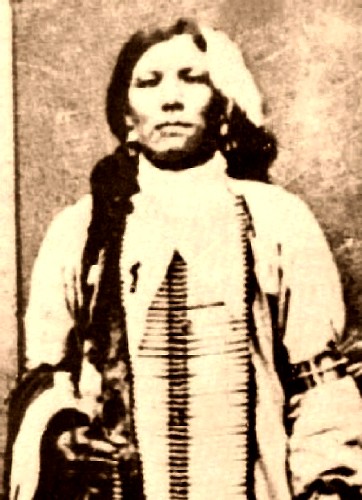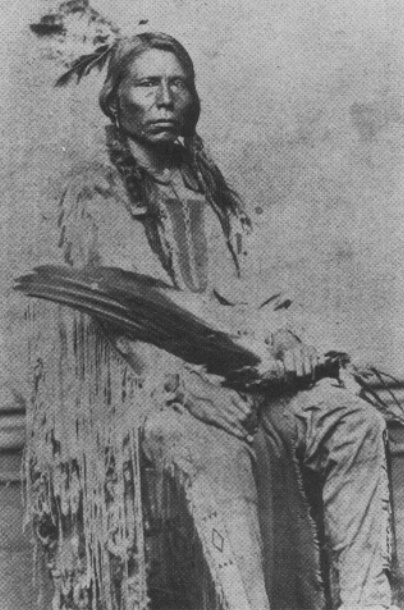 Chief Crazy Horse
Chief Crazy Horse 



Crazy Horse was born along Rapid Creek near present-day Rapid City, South Dakota, to the east of Paha Sapa, the Black Hills. He was the son of an Oglala medicine man of the same name and his Brule wife, the sister of Spotted Tail. His mother died when he was young, and his father took her sister as a wife and she helped raise Crazy Horse. He spent time in both Oglala and Brule camps. His childhood name was Curly. Before he was 12, Curly had killed a buffalo and received his own horse. About that age, on August 19, 1854, he was in CONQUERING BEARís camp in northern Wyoming when the Brule leader was killed in the GRATTAN Fight. Although he was away from camp during the Battle of Ash Hollow the following year, he witnessed the destruction of Sioux tepees and possessions by the soldiers during General WILLIAM S. HARNEYís punitive expedition through Sioux territory along the Oregon Trail, experiences that helped shape his militant attitude toward whites. After the Grattan Fight, Curly underwent a Vision Quest in which he had a vivid dream of a rider in a storm on horseback, with long unbraided hair, a small stone in his ear, zigzag lightning decorating his cheek, and hail dotting his body. Although a warrior, he bore no scalps. People clutched at the rider, but could not hold him. The storm faded and a red-backed hawk flew over the riderís head. When Curly later related the dream to his father, the medicine man interpreted it as a sign of his sonís future greatness in battle. At about the age of 16, now bearing his fatherís name, Crazy Horse rode for the first time as an adult warrior in a raid on Crows. Like the rider in his dream, he wore his hair free, a stone earring, and a headdress with a red hawk feather in it. His face was painted with a lightning bolt and his body with hail-like dots. The raid was successful, but Crazy Horse received a wound in the leg, because, his father interpreted, unlike the rider in the vision, he had taken two scalps. For the remainder of his career as a warrior, it is said that Crazy Horse never again took a scalp. Crazy Horse became further known to many of the Sioux bands for his courage in the War for the BOZEMAN Trail of 1866-68 under the Oglala RED CLOUD , when the army began building a road in Powder River country from the Oregon Trail to the goldfields of Montana. He was one of the young chiefs, along with the Miniconjou HUMP and the Hunkpapas GALL and RAIN-IN-THE-FACE , who used decoy tactics against the soldiers. Near Fort Phil Kearny, Wyoming, Crazy Horse participated in the Indian victories known as the FETTERMAN Fight of December 21, 1866, and the Wagon Box Fight of August 2, 1867. With the Fort Laramie Treaty of 1868, in which the army agreed to abandon the posts along the Bozeman Trail, Red Cloud and Spotted Tail settled on reservation lands. Crazy Horse became war chief of the Oglalas, with some Brule followers as well. Moreover, he made friends and followers among the Northern Cheyennes through his first marriage to a Cheyenne woman. He later married an Oglala woman too. Crazy Horse again waged war in the early 1870s, leading his warriors in raids on Northern Pacific Railway surveyors. The Black Hills Gold Rush, which brought more whites to the region, increased tensions. When the nomadic hunting bands ignored the order to report to their reservations by January 31, 1876, the military organized a campaign against them. Crazy Horseís band fought in the opening engagement of the War for the Black Hills of 1876-77, the Battle of Powder River. In March 1876, when his scouts discovered an Indian trail, General GEORGE CROOK sent a detachment under Colonel Joseph Reynolds to locate the Indian camp along the Powder in southeastern Montana. At dawn on March 17, Reynolds ordered a charge. The Indians retreated to surrounding bluffs and fired at the troops who burned the village and rounded up the Indian horses. Crazy Horse regrouped his warriors and, during a snowstorm that night, recaptured the herd. Meanwhile, SITTING BULL of the Hunkpapas, who, during the 1860s, had been active in raids in northern Montana and North Dakota along the Yellowstone and Missouri rivers, came into prominence as the spiritual leader of the allied Northern Plains tribes. Gall acted as his leading war chief. Crazy Horse joined the Hunkpapas on the upper Rosebud. On June 17, 1876, at the Battle of the Rosebud, Crazy Horse, Gall, and other war chiefs led their warriors in repeated assaults that forced Crookís troops to retreat. The Indians then moved their camp to the Bighorn River. On June 25, at the Battle of Little Bighorn, Crazy Horse led the victorious assault on GEORGE ARMSTRONG CUSTERís men from the north and west, while Gallís warriors attacked from the south and west. Following Little Bighorn, the Indian bands split up, and Crazy Horse led his people back to the Rosebud. The next autumn and winter, Colonel NELSON A. MILES led the 5th Infantry from a base at the confluence of the Tongue and Yellowstone rivers in a relentless pursuit of the militants, wearing them down and making it difficult for them to obtain food. When the Indians attempted hit-and-run strikes, the soldiers responded with heavy artillery to repel them. On January 8, 1877, at Wolf Mountain on the Tongue River in southern Montana, Crazy Horse led 800 braves in a surprise attack. Miles had disguised his howitzers as wagons and opened fire with them. The Indians withdrew to bluffs and, when the soldiers counterattacked, retreated under the cover of a snowstorm. More and more of the fugitive bands were surrendering. Crazy Horse received a promise from Crook through Red Cloud that if he surrendered, his people would have a reservation of their own in the Powder River country. His people weary and starving, Crazy Horse led some 800 followers to Fort Robinson on the Red Cloud Agency in northwestern Nebraska on May 5, 1877. But the promise of a reservation fell through. Crazy Horse remained at the Red Cloud Agency, and his presence caused unrest among the Indians and suspicion among the whites. Older chiefs resented the adulation he received from young braves. He remained aloof from whites and refused Crookís request to send him to Washington, D.C., for a meeting with President Rutherford Hayes. Crazy Horseís wife became sick. On hearing unfounded rumors that Crazy Horse was planning a rebellion, Crook ordered his arrest. Taking his family with him, Crazy Horse headed for the Spotted Tail Agency to the northwest. In a parley with troops sent to capture him, Crazy Horse agreed to return, and the next day, September 5, 1877, he was led back to Fort Robinson. What exactly happened at the Red Cloud Agency is unknown. It is thought Crazy Horse had not expected to be imprisoned. On realizing he was being taken to the stockade, he resisted and, while the Indian police attempted to regain control, he was bayoneted in the abdomen by a soldier. Crazy Horse died that night. His father and stepmother were given his body and, following their sonís request, buried him in his homeland which is somewhere near Wounded Knee, according to the legend.
